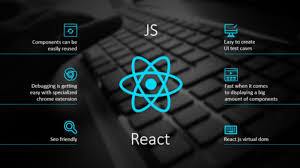#a virtual DOM to improve performance
Explore tagged Tumblr posts
Text
PureCode company | Performance and Scalability
Performance and scalability are key considerations when choosing a JavaScript framework. These factors directly impact the user experience and the application’s ability to grow and handle increasing loads. React and Vue both use a virtual DOM to improve performance, which is a key factor in the development of web applications.
#Performance and Scalability#development of web applications.#a virtual DOM to improve performance#React and Vue#purecode company#purecode#purecode software reviews#purecode reviews#purecode ai reviews#purecode ai company reviews
0 notes
Text

Day fourteen - Connor group part 2/2

@corrienteallita, @eljeebee, @ethicaltreatmentofcowplants, @hashimasims, @jonquilyst, @riverofjazzsims

Isla: Woohoo! I'm so happy I won; I can't wait for our solo date, Deanna!
Kaye: Yes! *fist pumps* Wait Isla did you just curse?
Isla: Wait did I? No I meant like happy woohoo not woohoo woohoo
Kaye: *snickers*
Isla: *gasps then sighs* Okay I walked in to that one

Solo dates were two hours long. Deanna arranged for a beach trip and made some ice cream as a snack. She then did one friendly and one romantic interaction. The rest of the date was whatever happened autonomously.

Kaye is ambivalent about the beach but is excited for sun and ice cream. She turns the stereo to world radio, a station Deanna enjoys as well.
Deanna: When you were a kid did you enjoy school?
Kaye: I enjoyed school very much and joined EVERY after school activity I could! I had a lot of friends and just enjoyed being a kid

Deanna: Did you have a dream job as a kid?
Kaye: I wanted to be a magician when I was little. The whole abracadabra pull a rabbit out of a hat and make Elephants disappear. Dom was always happy to help and be my assistant in all my living room performances *laughs*
Deanna: That sounds so awesome! I wanted to be a pirate
Kaye: A pirate! Well me hearty if you're the Captain, can I be your first mate? *Winks*
Deanna: *giggles*
Kaye: Oh my I can't believe I just did that! Ignore me please. That's really cool though, did you get the chance to sail the seven seas?

Reminiscing on being kids, Deanna asks if there's any memory Kaye can remember really well.
Kaye: My favorite memory might be when my grandfather planned a family camping trip to Granite Falls. My uncle made it all about himself of course but it was great to just be part of nature, fishing and hiking and such. We had to do most of it at night but it was still really cool!
Gluttonous Kaye just couldn't leave the date without more ice cream!

Isla is happy to be at the beach. While it's not Sulani it's a scene similar to home that can help her feel at ease. Before getting ice cream Deanna asks her what music she might like. Isla isn't really sure so Deanna puts on Island radio.
Deanna: When you were a kid did you enjoy school?
Isla: Meh, I was neutral about it. It's like work; it's something that I just had to do. But I was never bad in school. I made pretty good grades. I guess the thing about school is that you're inside most of the day sitting down doing nothing, and that was pretty boring and lame to me as a Sulani girl
Deanna: You'd rather be outdoors in the sand? I can definitely relate to wanting classes outside

Deanna: Did you have a dream job as a kid?
Isla: Oh I can't tell you that
Deanna: I'll tell you what I wanted to be
Isla: Fine. I... I wanted to be a professional shell collector
Deanna: That's adorable!
Isla: *smiles* thanks. My dad collects shells and I wanted to be just like him when I grew up
Deanna: I may have wanted to be a pirate
Isla: *giggles* a pirate? That's hilarious. I'd have hired you to track me down the rarest shells, the magic ones

The talking and laughter continues as the pair grow closer.
Isla: One of my earliest memories is finding my first shell on the beach. My older brothers went jet-skiing, but I was too little to go with them, so I stayed on the shore with my parents and my younger brother. While me and my dad were making a sand sculpture, I found a small scallop shell! My dad was so happy for me and ended up placing my shell with his own shell collection. It's definitely a core memory for me
Deanna: That's so sweet! I love him already


When everyone was back at the villa contestants had three hours of skill gaining time. Room doors were locked and autonomy turned off to give everyone a fair go.
Berenice practiced gaming while a calmer Dee was determined to beat some virtual high scores. Isabella also played some sims forever to improve her video gaming. Isla and Nyami both chose to tackle some logic while a happy Kaye decided to work on comedy.

Devin: How are you feeling about your date with Kaye?
Deanna: Pretty good. She's funny and I think we get on well
Devin: And how about Isla
Deanna: *smiles* Yeah I'll admit I'm a bit smitten with her. She knows so much about Sulani
Devin (voiceover): So how are you feeling about Deanna at the moment?
Isla (voiceover): *blushes* Definitely smitten

When skill time was over room doors were unlocked, autonomy was put back to full, and contestants were instructed to eat dinner. Needs decay had been on the whole day. Deanna was not instructed to talk to anyone so interactions happened autonomously, she was also locked out of rooms so she would be available for contestants to interact with.

It appeared that the time gaming had calmed down Dee, who was once again able to see people without wanting to punch them. Deanna made vegetable tempura since Kaye is vegetarian- she's not accidentally eating meat on our watch! Isabella was in a flirty mood but didn't perform any romantic interactions, choosing to be friendly instead.

Then we had a surprise! Deanna was talking to Nyami when she decided to stand up and hold her hands! This is the second physical flirtation Deanna has done autonomously. Could Nyami be a hidden gem despite her early lower ranking? The pair hugged and chatted with Kaye and Isla while everyone else went to bed.


55 notes
·
View notes
Text
Milgram Kinks & Headcanons (males)
mod's note: my interpretation / headcanons for the milgram boys; what they're like in bed and what I think they're kinks are
content: various kinks + smut. gn for the most part, but I sorta slipped up at john's part (feminine pet name there). mdni
Haruka Sakurai
I know many people hc Haruka as a true bottom, but he just screams switch to me
Of course the poor boy is extremely shy at first, definitely an inexperienced virgin that's completely clueless when you're sexually active for the first time. But once he had some time to explore his & your body, I honestly think he'd make a great boyfriend/sexual partner
Definitely a soft dom with some service tendencies. He's very gentle and deathly afraid of hurting you. But once you give him the okay to go faster & rougher, he cuts all restraints. With some encouragement/experience, he noticeably improves. And if you don't say anything, he can even get carried away with hearing you moan/beg for him
Still very eager to please you when you're topping (which is most of the time, let's be real here). He loves it when you take the lead and there's virtually nothing he won't do to please you. However, he also trusts that he's safe in your hands, so please, don't go as far as to make him feel like you never loved him/is embarrassed to have him as your bf. He might cry, and not out of pleasure
Fuuta Kajiyama
The type of guy to act like a dom, but is really a bottom
Fuuta is relatively shy when it comes to making love for the first time. Out of pride, he insists on being on top, but you can tell the dude is nervous & inexperienced as hell. He's a 5'4 chronically online gamer sitting at his gaming PC 24/7. It's honestly relatively easy to overpower him. If you get frustrated at his awkwardness, you can always just flip him over
He's never really honest with affectionate stuff that comes out of his mouth, but at least his body is honest. Very sensitive and reaction to your touch, he's like putty in your hands. The type to futility muffle his moans of pleasure in the pillows as you give him a hand/blow job.
Oh, but don't you think it's just you being quick to realize what turns Fuuta on. Once Fuuta gets more comfortable with making love, he smirks seeing you melt in his hands. He becomes a bit of a tease, but I also see him as a very protective lover. He would never go as far as to make you cry or not enjoy the sex, but you can tell he definitely enjoys himself hearing you beg a little bit for him
Shidou Kirisaki
Shidou is the type of guy that everyone lust for, and for good reason
The type of man who simultaneously intimidates and attracts the nurses in training & doctors performing their rotations. His calm and collected demeanor comes off as almost stoic and chilling to a complete stranger, but they can't help but be drawn in at his attractive features. And when he reveals a gentle smile and mature personality, it just raises the question of how many surprises does this man have up his sleeve
Behind his kind smile, he's into it all. Rough sex, bdsm, bondage, marking, etc. He adores edging you and hearing you whimper for more as he pulls away from your throbbing core for the nth time, only to pepper your stomach with soft kisses. Of course, whatever his angel is comfortable with
He can definitely let you take the lead, but he usually prefers being the dominant one. And if you give him permission, he can get borderline sadistic with how far he can take it. He would never hurt you in a way you wouldn't want, but he'd be lying if he didn't think you look adorable tied up and struggling to take his whole length
He knows how to make you cum several times a night and memorized your orgasm face even. Perfect for when he wants to edge you, especially if you've been bratty. You can't walk straight afterwards, but at least Shidou is the king of aftercare
Kazui Mukuhara
He wants to be loved and caressed like a cat
He doesn't mind being on bottom or top. He does have a slight preference towards being the submissive one, but can gladly top if his partner wants him to. And, with the right partner, Kazui can definitely have a great sex life between him and his lover
If you don't ask, he's not one to top much. Instead letting you take the lead and be okay with, literally, anything you want. He may even discover some kinks himself. Toys, edging, bondage, gags, maybe even a bit of degradation. Dare I say Kazui Mukhara is a bit on the masochistic side? He fucking loves watching you ride him as he's biting on the gorgeous ball gag you popped in his mouth
On the off chance he's topping (usually because you insisted), you're in for the real treat. Kazui is the strongest out of all the prisoners, courtesy of the arm-wrestling rankings. Foreplay usually lasts a long time with him, it's almost painful. He's not doing it out of sadism though, just that he doesn't want to hurt you. It's not until you're whining for him to penetrate you that he finally enters you. And my god--you can definitely feel him all right, and he is H A R D
Mikoto Kayano
Average sex for an average guy? Nahhhhhhh. Mikoto is a bit of a wild card, tbh. He may not be into hardcore bdsm like the rest of the smoking trio, but his people pleasing tendencies are still apparent. He's open to try anything you suggest & are into. You never really know what kind of mood he's in
Pretty vanilla, tbh. But will gladly let you ride him until both of you are overstimulated. The dude needs a serious stress reliever when he gets home from work, and he's so happy that you're there to help him out. While he enjoys slow and sensual sex more, he's certainly a fan of rough quickies. When he really needs to blow off some steam from work, you can tell from his fast pace that he's taking it out on you
He's a giver through and through. He loves giving you head, but won't ever deny receiving it. Something about you sucking him off, watching your head bob back and forth as he covers his mouth and watches you with intense, slightly nervous eyes is so hot to him. Gets nervous when you swallow him whole, but a small part of him finds it so sexy
He's pretty vocal during sex, but it's mostly his moans and groans, he's quite sensitive. But will try to praise you as much as possible. You're doing so good, you just have to know it
John Kayano
Definitely a sadistic dom, nothing new
Especially if you wanna test him and be bratty, ohhhhhh boy! You're in for a real treat. John is not necessarily a brat tamer at heart, but he can certainly put you in your place if you're pushing his buttons. His favorite thing to do is to collar you and make you cockwarm him
He doesn't really have a limit, it's up to you to tell him about your boundaries and kinks. And once you gave him permission, the dude is certainly going to show you a good time. Degradation, bondage, toys, orgasm denial. When he gets more experience, he discovers he loves being in control
Swears a lot when ploughing into you. His dirty talk is def a mix of degradation and praise, and his moans are more guttural groans than anything. He just can't believe how good you make him feel. If you squint, you can tell that John worships every part of your body. How tight you feel when you squeeze around him, how your fingers claw at his chest, your moans escaping from your lips. Dear god, he can't wait to get his hands on you and treat you like the slutty princess you are
#milgram#kazui mukuhara#shidou kirisaki#haruka sakurai#mikoto kayano#fuuta kajiyama#john kayano#john milgram#sakurai haruka#kajiyama fuuta#kirisaki shidou#mukuhara kazui#kayano mikoto#milgram x reader
30 notes
·
View notes
Text
Javascript Frameworks
Absolutely, JavaScript frameworks are the backbone of modern web development, empowering developers to create robust, interactive, and responsive web applications. From Angular and React to Vue.js and beyond, these frameworks have revolutionized how we build web applications. Let's delve deeper into the world of JavaScript frameworks and explore their significance, popular choices, and their impact on web development.
Evolution of JavaScript Frameworks
JavaScript frameworks emerged to streamline the development process, offering predefined structures, libraries, and functionalities. They simplify complex tasks, making it easier to create feature-rich web applications.
Angular:
Angular, developed by Google, introduced the concept of a structured front-end framework. Its two major versions, AngularJS (1.x) and Angular (2+), introduced improvements in performance, modularity, and enhanced features like two-way data binding.
React:
React, maintained by Facebook, revolutionized front-end development with its component-based architecture. Its virtual DOM implementation significantly improved rendering efficiency, making it a go-to choice for building dynamic user interfaces.
Vue.js:
Vue.js gained popularity for its simplicity and flexibility. Its progressive framework allows developers to integrate it into existing projects seamlessly. Vue's gentle learning curve and adaptability have attracted a large community of developers.
Why Use JavaScript Frameworks?
Productivity: Frameworks provide reusable components, tools, and patterns, speeding up development.
Performance: Optimized rendering, virtual DOM, and efficient data binding contribute to faster applications.
Community Support: Active communities offer resources, libraries, and solutions to common problems.
Scalability: Frameworks often come with built-in features for scaling applications as they grow.
Choosing the Right Framework
Selecting a framework depends on project requirements, team expertise, scalability needs, and community support.
Angular: Ideal for large-scale applications requiring a complete framework solution with a structured architecture.
React: Suited for building dynamic, high-traffic applications, leveraging its virtual DOM and component-based structure.
Vue.js: A versatile choice, especially for smaller to medium-sized projects, due to its simplicity and easy integration.
The Future of JavaScript Frameworks
The landscape of JavaScript frameworks continues to evolve with updates, new releases, and the emergence of alternative frameworks. There's a trend toward optimizing performance, reducing bundle sizes, and improving developer experience.
Web Components and Micro-Frontends:
The rise of Web Components and micro-frontends is changing how developers architect applications. These technologies enable building modular, reusable components that can be utilized across frameworks and projects.
Framework Agnosticism:
Developers are exploring ways to combine different frameworks or use libraries like Svelte and Alpine.js to achieve optimal performance and flexibility while minimizing the constraints of a single framework.
Conclusion
JavaScript frameworks have significantly shaped the web development landscape, offering diverse options to cater to varying project needs. As technology evolves, the emphasis shifts towards performance, scalability, and adaptability, driving innovation in the realm of JavaScript frameworks.
Ultimately, the choice of a framework depends on the project's specific requirements, team expertise, and long-term goals. Understanding the strengths and trade-offs of each framework empowers developers to make informed decisions, ensuring the successful creation of modern, efficient web applications.
7 notes
·
View notes
Text
React JS
Component-Based Architecture:
React applications are built using components, which are reusable, self-contained pieces of the UI. Components can be nested, managed, and handled independently, leading to better maintainability and scalability.
JSX (JavaScript XML):
React uses JSX, a syntax extension that allows HTML to be written within JavaScript. This makes the code more readable and easier to write.
Virtual DOM:
React maintains a virtual DOM, an in-memory representation of the actual DOM. When the state of an object changes, React updates the virtual DOM and efficiently determines the minimal set of changes needed to update the real DOM, leading to performance improvements.
One-Way Data Binding:
Data flows in one direction, from parent to child components, which makes the data flow and logic easier to understand and debug.
State Management:
React components can maintain internal state, making it easy to build dynamic and interactive UIs. For more complex state management, libraries like Redux or Context API can be used.
Advantages of Using React
Performance:
Due to the virtual DOM, React minimizes direct manipulation of the DOM, resulting in better performance for dynamic applications.
Reusable Components:
Components can be reused across different parts of an application, reducing the amount of code and enhancing consistency.
Strong Community and Ecosystem:
A large community and a rich ecosystem of tools and libraries support React, making it easier to find solutions, get support, and integrate with other technologies.
SEO Friendly:
React can be rendered on the server using Node.js, making web pages more SEO-friendly compared to traditional client-side rendering.
Getting Started with React
To start building applications with React, you need to have Node.js and npm (Node Package Manager) installed. Here’s a basic setup to create a new React application:
Install Node.js and npm:
Download and install from Node.js website.
Create a New React Application:
You can use Create React App, an officially supported way to create single-page React applications with no configuration required:
npx create-react-app my-app cd my-app npm start
import React from 'react';
function Welcome(props) { return
Hello, {props.name}
; }
export default Welcome;
#React JS#Front end Developer#Advanced JavaScript#coding#html css#htmlcoding#html#css#php#website#html5 css3#software#React Training
5 notes
·
View notes
Text
Top 10 Front-End Frameworks and Libraries for 2024
As the web development landscape continues to evolve, staying updated with the latest front-end frameworks and libraries is crucial for any developer. Whether you're a seasoned pro or just starting out, knowing which tools to use can significantly impact your productivity and the quality of your projects. In this post, we’ll explore the top 10 front-end frameworks and libraries that are set to dominate in 2024.
1. React
React remains one of the most popular front-end libraries, known for its simplicity and flexibility.
Key Features of React
Component-Based Architecture: Reusable components make development efficient and manageable.
Virtual DOM: Enhances performance by minimizing direct DOM manipulation.
Strong Community Support: A vast ecosystem of tools, libraries, and tutorials.

2. Angular
Angular, backed by Google, is a powerful framework for building dynamic single-page applications (SPAs).
Why Choose Angular?
Two-Way Data Binding: Synchronizes data between the model and the view.
Dependency Injection: Improves code maintainability and testability.
Comprehensive Documentation: Extensive resources for learning and troubleshooting.

3. Vue.js
Vue.js has gained popularity due to its gentle learning curve and versatility.
Advantages of Vue.js
Reactive Data Binding: Simplifies state management.
Single-File Components: Encapsulate HTML, CSS, and JavaScript in one file.
Flexibility: Can be used for both large-scale and small-scale applications.

4. Svelte
Svelte is a relatively new player that compiles components into highly efficient vanilla JavaScript at build time.
Svelte’s Standout Features
No Virtual DOM: Directly manipulates the DOM for better performance.
Less Boilerplate: Cleaner code with minimal overhead.
Ease of Use: Intuitive and straightforward syntax.

5. Bootstrap
Bootstrap is a front-end framework that provides pre-designed components and a responsive grid system.
Benefits of Using Bootstrap
Responsive Design: Ensures your site looks great on all devices.
Pre-Styled Components: Saves time with ready-to-use UI elements.
Customizable: Easily customize with Sass variables and Bootstrap’s extensive options.

6. Tailwind CSS
Tailwind CSS is a utility-first CSS framework that allows for rapid UI development.
Tailwind CSS Features
Utility-First Approach: Use utility classes directly in your HTML.
Customizable: Extensive configuration options to suit your project’s needs.
Consistency: Enforces a consistent design language across your project.

7. Ember.js
Ember.js is a robust framework for building ambitious web applications.
Why Ember.js Stands Out
Convention over Configuration: Reduces the amount of decision-making and boilerplate code.
Strong Routing: Powerful routing capabilities for managing application state.
Productivity: Focuses on developer productivity with built-in best practices.

8. Alpine.js
Alpine.js offers a minimal and lightweight way to add interactivity to your websites.
Key Features of Alpine.js
Lightweight: Small footprint with only a few kilobytes.
Declarative Syntax: Similar to Vue.js, making it easy to understand and implement.
Ease of Integration: Can be easily integrated into existing projects.

9. Next.js
Next.js is a popular React framework that enables server-side rendering and static site generation.
Benefits of Using Next.js
Server-Side Rendering (SSR): Improves performance and SEO by rendering pages on the server.
Static Site Generation (SSG): Pre-renders pages at build time for fast load times.
API Routes: Allows you to create API endpoints within your application.

10. Lit
Lit is a simple library for building fast, lightweight web components.
Advantages of Lit
Web Components: Embraces the web components standard for reusable, encapsulated HTML elements.
Performance: Lightweight and highly performant.
Simple API: Easy to learn and use with a minimal API surface.

Conclusion
Choosing the right front-end framework or library can significantly impact your workflow and the quality of your projects. Whether you prefer the flexibility of React, the structure of Angular, or the simplicity of Svelte, there's a tool out there to suit your needs.
Final Tips for Selecting a Framework or Library
Project Requirements: Consider the specific needs of your project.
Community and Support: Look for frameworks with strong community support and documentation.
Learning Curve: Choose a tool that matches your current skill level and the time you have available to learn.
By staying informed about the latest tools and trends, you can ensure that your skills remain relevant and that you can deliver the best possible results in your projects. Happy coding!
Remember, the best tool is the one that helps you get the job done efficiently and effectively. So, dive into these frameworks and libraries, and take your front-end development skills to the next level!
Share Your Thoughts
I'm curious to know your thoughts on these front-end frameworks and libraries. Have you used any of them in your projects? Which one is your favorite, and why? Share your experiences and insights in the comments below.👇
2 notes
·
View notes
Text
Top Frontend Development Tools to Use in 2023

Front-End Web Development is a rapidly evolving field, with new tools and technologies constantly emerging. As we step into the year 2023, front-end developers are facing new challenges and opportunities in crafting engaging and responsive user interfaces. To stay ahead in this dynamic landscape, it's crucial to arm yourself with the right Frontend Development Tool.
In this blog, we will explore the top front-end development tools that are expected to dominate the industry in 2023. From code editors and frameworks to design tools and performance optimization, these tools will help you streamline your workflow, enhance productivity, and create cutting-edge web applications that meet the demands of modern users. Let's dive into the exciting world of front-end development and discover the must-have tools for 2023!
Top Frontend Development Tools to Use in 2023:
ReactJS:
ReactJS is a popular JavaScript library used by any Frontend Development Company for building user interfaces. With its component-based architecture, React allows developers to create reusable UI components that can be easily combined to build complex web applications.
React's virtual DOM (Document Object Model) enables efficient rendering, making it highly performant for creating interactive and dynamic user interfaces. React also has a large ecosystem of supporting tools, libraries, and community resources, making it a top choice for front-end development in 2023.
Vue.js:
Vue.js is another powerful JavaScript framework for building user interfaces. Known for its simplicity and ease of integration, Vue.js offers a flexible and scalable approach to front-end development. Vue.js follows a component-based architecture similar to React, making it highly modular and easy to understand.
Vue.js also offers features like two-way data binding, computed properties, and a comprehensive template syntax that simplifies the development process. With its growing popularity and extensive documentation, Vue.js is expected to gain more traction with any Web Development Company in 2023.
Figma:
Figma is a popular design tool that has gained significant popularity in recent years. It offers a collaborative and cloud-based approach to design, allowing front-end developers to work seamlessly with designers.
Figma offers powerful design and prototyping features, such as vector editing, component libraries, and real-time collaboration, making it a go-to tool for designing modern and responsive user interfaces. Figma also offers integrations with other design and development tools, making it a versatile choice for front-end developers in 2023.
Visual Studio Code:
Visual Studio Code (VSCode) is a widely used code editor that has become a staple in the front-end development community. With its extensive plugin ecosystem, powerful debugging capabilities, and rich set of features, VSCode provides an efficient and productive environment for writing front-end code.
VSCode offers support for a wide range of programming languages, including JavaScript, HTML, CSS, and popular front-end frameworks, making it a top choice for front-end developers in 2023.
Performance Optimization Tools:
As web applications become more complex, optimizing performance has become a crucial aspect of front-end development. Tools like Lighthouse, Webpage Test, and Google Page Speed Insights help developers analyze and optimize the performance of their web applications.
These tools offer insights and recommendations for improving areas like load times, caching, image optimization, and accessibility, helping developers create blazing-fast and user-friendly web applications in 2023.
jQuery:
jQuery is a widely used JavaScript library that has been a popular front-end development tool for many years. It provides a simplified way to interact with HTML documents, manipulate DOM elements, handle events, and make AJAX requests. jQuery offers a concise syntax and cross-browser compatibility, making it easy for developers to write efficient and interactive front-end code.
One of the key advantages of using jQuery is its simplicity and ease of use. It provides a concise and intuitive syntax that allows developers to perform common tasks, such as traversing the DOM, manipulating elements, and handling events, with just a few lines of code. This can significantly reduce the amount of code needed and simplify the development process.
Git and Version Control Tools:
Version control is an essential aspect of modern front-end development, allowing developers to collaborate, track changes, and revert to previous versions of their code.
Git, along with platforms like GitHub and GitLab, offers powerful version control capabilities, making it easy to manage the codebase, collaborate with teammates, and deploy changes to production. These tools are expected to continue to be a critical part of front-end development workflows in 2023.
CSS Pre-processors:
CSS pre-processors like Sass, Less, and Stylus have become popular tools for writing efficient and maintainable CSS code. These pre-processors offer features like variables, mixins, and nested selectors, making it easier to manage and organize CSS code for large web applications.
Conclusion:
The top front-end development tools for 2023 are expected to provide developers with powerful features that enhance their productivity, streamline their workflow, and enable them to create modern, responsive, and high-performing user interfaces.
These tools will be invaluable for Frontend Development Company India and Frontend developers in keeping up with the evolving landscape of web development. If you are looking for a Frontend Development Company in India, then connect with us now.
3 notes
·
View notes
Text
React training in hyderabad

Introduction to React JS
React is like the carpenter’s toolbox for building web interfaces. Created by the folks at Facebook, it’s a set of tools that makes crafting interactive and dynamic websites a whole lot easier. Imagine it as a set of magic building blocks that help developers create sleek, responsive, and engaging front-end applications. Since its debut in 2013, React has become a favorite among web developers, kind of like the go-to tool when you want to make your website not just look good but also feel lively and interactive. It’s a bit like the secret sauce behind many of the awesome websites you use every day.
Features of React JS
Declarative Syntax: React uses a declarative syntax, allowing developers to describe the desired outcome, and React takes care of the underlying logic to achieve that outcome. This makes the code more predictable and easier to understand.
2. Component-Based Architecture: React follows a component-based architecture where the UI is broken down into reusable components. Each component manages its own state and can be composed to build complex user interfaces.
3. Virtual DOM: React uses a virtual DOM to improve performance. Instead of directly manipulating the actual DOM, React creates a virtual representation of it in memory and updates only the parts of the actual DOM that have changed. This minimizes the number of DOM manipulations, resulting in faster updates.
4. JSX (JavaScript XML): React uses JSX, a syntax extension for JavaScript that allows you to write HTML elements and components in a syntax similar to XML or HTML. JSX makes the code more readable and helps with the integration of UI components.
Components in React
In React, think of components as building blocks for your user interface — they’re like Lego pieces that you can assemble to create your application. These components are self-contained and can be reused, making it easier to manage and organize your user interface. It’s as if you’re constructing your application with Lego bricks, where each brick represents a specific part of your user interface.
This modular approach simplifies the development process and encourages a more flexible and maintainable code structure.
Dumb components: Think of these components as the friendly faces you see in a store’s display window. They’re there to catch your eye and make everything look inviting. These components are all about the visual appeal, like the welcoming decor of a shop, without getting into the technical details or behind-the-scenes work.
2. Smart components:Think of these components as the wise decision-makers. They not only handle the important business details but also decide when and how things should appear on the screen. It’s like having an event planner for your app — they manage the behind-the-scenes work and ensure everything shows up at just the right time and in the best way possible.
NOTE 🤓:These components can come to life either as classes or functions. They’re adaptable, like a versatile tool that can be crafted in different ways based on your needs.
State of a component
In the world of React, think of the state as a component’s personal notebook — it’s where the component keeps track of information that can change over time. This information might shift based on how users interact with the component or how the outside world reacts to it. Whether the component is a classic novel (a class) or a snappy note (a function), it handles its state in its own unique way. What’s really neat is that when this internal state undergoes a change, it’s like the component automatically freshens up, updating its look without any fuss — kind of like a quick, seamless makeover happening in the background.
Properties of a component
In React, components communicate with each other through a feature called “Props.” It’s like sharing notes or gifts between them, but here’s the catch: the communication is a one-way street, flowing strictly from a parent component to its child. Imagine it as a parent passing a sealed letter to their child. What’s interesting is that these messages, or props, are unchangeable once delivered. It’s akin to sending a secure package — the information remains intact, ensuring a clear and organized flow of data between React components.
Life cycle of a component
Components in React have a lifecycle, and it’s like understanding the natural flow of a component’s journey. This lifecycle serves as our guide, allowing us to make smart decisions at different points in the component’s existence. It’s a bit like knowing when to take specific actions, such as making an HTTP request or tidying up the user interface.
componentDidMount: Think of this as the behind-the-scenes moment when the component takes its place on the UI stage for the first time.
componentDidUpdate:Picture this as the component’s way of adapting and evolving — a sort of behind-the-scenes dance that happens when the component experiences a change in its mood or receives something new to work with.
componentWillUnmount: Function executed when the component is unmounted from the UI.
React Hooks are a set of functions that were introduced in React 16.8 to enable the use of state and other React features in functional components. Before the introduction of hooks, state and lifecycle methods were primarily associated with class components. Hooks allow functional components to have state, lifecycle features, and more, making them a powerful and concise alternative to class components.
The most commonly used React Hooks include:
use State: Enables functional components to manage state.
2. use Effect: Provides a way to perform side effects in functional components, similar to component DidMount and component DidUpdate in class components.
3. use Context: Allows functional components to subscribe to React context without introducing a nested component.
4. use Reducer: An alternative to use State for managing more complex state logic in functional components.
5. use Callback and use Memo: Optimize performance by memoizing functions and values to prevent unnecessary re-renders.
Hello world with create react app
Create React App is a ready-to-go setup designed for building React applications. It works seamlessly with Node version 14.0.0 or higher and npm version 5.6 or higher. To kickstart a new project, simply run the following commands in your terminal:
“npx create-react-app your-project-name”
Most used add-on libraries in React JS
1. Redux: A predictable state container for managing the state of your application in a more organized and scalable way.
2. React Router: Provides navigation and routing functionalities for React applications, allowing you to create dynamic and SPA (Single Page Application) experiences.
3. Axios: A promise-based HTTP client that simplifies making HTTP requests in React applications.
4. Styled-components: Enables writing CSS directly in your JavaScript files using tagged template literals, promoting component-based styling.
5. Material-UI: A popular React component library that implements Google’s Material Design, offering a set of pre-designed and customizable components.
6. Formik: A form management library that simplifies form building, validation, and handling form submissions.
7. React Query: A library for managing, caching, and syncing asynchronous data in React applications, making it easier to work with API calls and data fetching.
8. Chakra UI: A component library for React that provides a set of accessible and customizable UI components.
9. React Helmet: Allows manipulation of the document head, useful for managing meta tags, titles, and other document head elements.
10. React-Bootstrap: Integrates the Bootstrap CSS framework with React components, providing a set of responsive and customizable UI elements.
Recursos React JS
React Official Website: Explore the heart of React at React official websites. Immerse yourself in comprehensive documentation, tutorials, and fundamental concepts that form the backbone of React development.
React Blog: Stay updated on the latest in React by checking out the React Blog. Dive into news, official articles, and insightful posts that illuminate the evolving world of React development.
Thinking in React: Embark on your React journey by embracing the philosophy of “Thinking in React.” Learn how to kickstart your understanding by focusing on the core concept of thinking in components. The journey begins with a guide to getting started thinking in components. This course is designed to provide students with a solid understanding of the architecture and functionality of MuleSoft’s integration platform.
3 notes
·
View notes
Text
React Programming: A Comprehensive Guide and Use Cases
Table of Contents
Introduction to React
Key Features of React
React vs. Other JavaScript Frameworks
Setting Up a React Development Environment
React Components and JSX
State and Props in React
React Hooks
React Router for Navigation
State Management in React (Redux, Context API)
React for Web Development
React for Mobile Development (React Native)
React for Single-Page Applications (SPAs)
React for Progressive Web Apps (PWAs)
React in Enterprise Applications
React for E-Commerce Platforms
React for Social Media Platforms
React for Real-Time Applications
React for Dashboards and Data Visualization
Companies Using React
Pros and Cons of React
Future of React
Conclusion
1. Introduction to React
React is an open-source JavaScript library developed by Facebook in 2013 for building user interfaces (UIs). It is widely used for creating single-page applications (SPAs), dynamic web apps, and even mobile apps (via React Native).
Why React?
✅ Component-Based Architecture – Reusable UI components. ✅ Virtual DOM – Efficient rendering and performance. ✅ Rich Ecosystem – Large community, libraries, and tools. ✅ Cross-Platform – Works for web, mobile, and desktop.
React is maintained by Facebook and a community of developers, making it one of the most popular front-end libraries today.
2. Key Features of React
A. Component-Based Architecture
Break UI into reusable components (e.g., Button, Header).
Example:jsxCopyDownloadfunction Welcome() { return Hello, React!; }
B. Virtual DOM
Improves performance by minimizing direct DOM updates.
Only re-renders changed elements (not the whole page).
0 notes
Text
Top Front-End Frameworks Web Development Companies Use in 2025
The front-end landscape continues to evolve rapidly, with user expectations pushing web applications to be faster, more interactive, and visually seamless across devices. In 2025, choosing the right front-end framework is a strategic decision that impacts performance, scalability, and developer efficiency. That’s why every seasoned Web Development Company evaluates and adopts frameworks that align with both technical requirements and user experience goals.
From enterprise-grade portals to dynamic eCommerce platforms and progressive web apps, front-end frameworks power the interface users directly engage with. Below, we explore the top front-end frameworks dominating the web development space in 2025—and why agencies rely on them.
1. React.js
Still the industry favorite in 2025, React continues to dominate front-end development. Backed by Meta (Facebook), React is a component-based JavaScript library for building fast, interactive UIs.
Why companies use it:
Strong community support and third-party integrations
Highly reusable components and custom hooks
Great compatibility with backends and headless CMS
Ideal for SPAs, PWAs, and enterprise dashboards
Bonus: React also powers frameworks like Next.js, which brings SSR (server-side rendering), static site generation, and improved SEO to the React ecosystem.
2. Vue.js
Vue has steadily gained popularity thanks to its simplicity, performance, and developer-friendly design. In 2025, Vue 3—with its Composition API and improved TypeScript support—makes it a strong choice for mid-scale projects and agile teams.
Why companies use it:
Lightweight and easy to learn
Reactive two-way data binding
Great for progressive migration in legacy apps
Vue CLI and ecosystem tools enhance productivity
Ideal for: SaaS applications, admin panels, and interactive marketing sites.
3. Next.js
Although technically a framework built on React, Next.js deserves a separate mention due to its dominance in building high-performance, SEO-friendly web applications.
Why companies use it:
Built-in support for SSR, SSG, and ISR
Seamless routing and dynamic page generation
API routes for backend-like features
Excellent for headless CMS integrations and eCommerce
Trend in 2025: Many Jamstack-based websites now rely on Next.js paired with GraphQL and CMS tools like Sanity or Strapi.
4. Svelte & SvelteKit
Svelte takes a unique approach—it compiles your code at build time, eliminating the need for a virtual DOM. The result? Ultra-fast and lightweight apps with excellent runtime performance.
Why companies use it:
Less boilerplate code, clean syntax
Faster load times and smaller bundle sizes
SvelteKit brings routing, server-side rendering, and file-based API integration
Use case: Startups looking for speed, performance, and simplicity in modern SPAs.
5. Angular
Angular, maintained by Google, remains a staple in enterprise web development in 2025. While it's more complex and opinionated than React or Vue, it provides everything out of the box—from routing and state management to HTTP clients and dependency injection.
Why companies use it:
Built-in tooling for testing, forms, and HTTP
TypeScript-first architecture
Great for large-scale, complex applications
Best for: Enterprise-level apps with large teams and strict development protocols.
6. Remix
Remix is a relatively new but rapidly adopted React framework focusing on performance, nested routing, and better use of the browser’s native capabilities. In 2025, many agencies use Remix for building dynamic, data-driven apps with great SEO and loading speed.
Why companies use it:
Streamlined data loading methods
Improved error handling
Great SEO out of the box
Works well with modern APIs and backends
Gaining ground: Especially among React teams seeking an alternative to Next.js.
7. Astro
Astro is one of the rising stars in front-end frameworks as of 2025. It allows developers to ship zero JavaScript by default and only hydrate interactive components as needed. It supports multiple frameworks (React, Vue, Svelte) in the same project.
Why companies use it:
Partial hydration = faster sites
Ideal for content-heavy sites and blogs
Headless CMS integration is seamless
Perfect for: Static sites, marketing pages, and performance-first websites.
Final Thoughts
The front-end frameworks used in 2025 reflect a shift toward performance, flexibility, SEO-friendliness, and developer ergonomics. Whether you're building a blazing-fast content site or a complex dashboard, the right framework accelerates development, improves UX, and ensures scalability.
Partnering with a forward-thinking Web Development Company ensures that your project is built using the best-suited technology stack. These experts evaluate your business needs, future scalability, SEO requirements, and user expectations to recommend the optimal front-end framework—ensuring your digital product doesn’t just look good, but performs exceptionally.
0 notes
Text
Why React JS Development is Ideal for Single Page Applications (SPAs)

In today’s fast-paced digital world, speed and performance are everything. That’s why more businesses are turning to React JS Development for building highly interactive Single Page Applications (SPAs). With its component-based architecture, virtual DOM, and high reusability, React JS ensures faster development, improved performance, and a seamless user experience.
The Power of React and Nodejs in SPA Development
When combined with Node.js, React JS Development becomes a powerhouse for building scalable and efficient SPAs. Node.js handles server-side operations while React takes care of the client-side, enabling a complete JavaScript-based tech stack. This pairing not only simplifies development but also ensures faster loading times, real-time updates, and better performance across devices.
Many developers leverage the combination of React and Nodejs to create dynamic, data-driven applications that require minimal server refresh. This full-stack synergy is what makes React-based SPAs a top choice in modern web application development.
Bootstrap Vs React - Which is Best Framework?
Designing an attractive and functional UI is a major part of SPA development. While Bootstrap has long been a favorite for rapid UI design, developers now often compare Bootstrap Vs React - which is best framework for SPA development.
Bootstrap provides pre-built UI components, making it ideal for quick prototypes. However, React’s modular, reusable components give developers the freedom to create highly customized interfaces. In the context of SPAs, React offers better performance and more scalability, making it the preferred choice among developers aiming for long-term flexibility.
React JS Development for Custom Web Application Development
No two businesses are alike, which is why React JS Development is often chosen for building tailored SPAs that meet specific business needs. Whether it’s a dashboard, eCommerce store, or content management system, React offers the flexibility to design applications that scale with your organization.
For businesses looking to invest in Custom Web Application Development, React's ecosystem supports state management (like Redux), API integrations, and dynamic content loading. These features ensure that the SPA is not only responsive but also intuitive and aligned with user expectations.
Book an Appointment
Ready to take your digital presence to the next level? Book an appointment with our React JS experts and find out how we can bring your SPA vision to life.
React JS and MEAN Stack Development Integration
While React JS is often paired with various backend technologies, one common and effective combination is seen in MEAN Stack Development. This stack includes MongoDB, Express.js, Angular (or React as a replacement), and Node.js. In many modern projects, developers substitute Angular with React for better component control and flexibility.
Integrating React JS Development into the MEAN stack allows for real-time functionality, faster page loads, and seamless single-page navigation—perfect for businesses looking for speed and performance in their applications.
Why SPAs and React JS are a Perfect Match
Single Page Applications need to be fast, dynamic, and interactive. React JS Development delivers on all fronts with features like:
Virtual DOM for rapid UI updates
Component-based architecture for better reusability
Declarative code that makes debugging easier
React’s ability to render components without refreshing the entire page ensures a smoother user experience. This is especially important for SPAs, where maintaining application state and providing instant feedback is crucial.
Real-World Examples of React JS in Action
Many industry leaders use React JS Development to build their SPAs. Platforms like Facebook, Instagram, and Airbnb rely on React for its efficiency and scalability. These applications are expected to handle millions of interactions per day, and React’s architecture helps make that possible.
These real-world applications show how investing in React JS Development can provide the foundation for a responsive and high-performing digital product.
Final Thoughts: React is the Future of SPA Development
React JS isn’t just a trend—it’s a long-term solution for businesses aiming to stay competitive. With its robust ecosystem, reusable components, and integration capabilities, React JS Development enables companies to build scalable, high-performance Single Page Applications efficiently.
Whether you're a startup or an enterprise, React empowers you to create engaging, user-centric experiences that drive results. Don't wait—book an appointment with our development team and start building your next-gen web application today.
0 notes
Text
The Future of Front-End Development: Technologies, Trends, and Services in 2025
Front-end development plays a crucial role in how users interact with websites and applications. The user experience (UX), speed, and responsiveness of a website all depend on how well the front end is developed. As technology evolves, businesses need to stay ahead by adopting modern front end development technologies and ensuring seamless experiences across devices.
With growing competition in the digital space, companies are also investing in front end development services to create high-performing, visually appealing, and user-friendly applications. This article explores the latest technologies, trends, and services shaping the future of front-end development.
1. What is Front-End Development?
Front-end development focuses on the visual and interactive aspects of a website or web application. It includes everything a user sees and interacts with, such as navigation menus, buttons, animations, and layout structures.
Key Responsibilities of Front-End Developers:
Writing clean, efficient, and responsive code.
Ensuring seamless cross-browser compatibility.
Optimizing websites for faster load times and better performance.
Creating accessible and user-friendly interfaces.
Integrating with backend APIs for smooth data retrieval.
To build fast and engaging user interfaces, developers rely on modern front end development technologies that simplify coding, enhance performance, and improve scalability.
2. Latest Front-End Development Technologies in 2025
With new frameworks, libraries, and tools emerging, front-end development is continuously evolving. Here are some of the best technologies shaping the front end in 2025.
A) Front-End Programming Languages
1. JavaScript (JS)
JavaScript remains the dominant language for front-end development, powering interactive and dynamic web applications. With the rise of frameworks like React, Vue, and Angular, JavaScript continues to be at the core of modern web development.
2. TypeScript
TypeScript, a strongly-typed superset of JavaScript, is becoming increasingly popular due to its ability to reduce errors and improve code maintainability. More developers are adopting TypeScript for large-scale applications.
3. WebAssembly (WASM)
WebAssembly allows developers to run high-performance applications in web browsers using languages like C++ and Rust. It is revolutionizing front-end development by enabling faster execution of complex applications.
B) Best Front-End Frameworks and Libraries
4. React.js
Developed by Meta, React remains one of the most widely used front-end libraries. Its component-based architecture, virtual DOM, and support for server-side rendering (SSR) make it ideal for building fast and scalable web applications.
5. Vue.js
Vue is a lightweight yet powerful framework known for its ease of use and flexibility. With Vue 4 expected to launch soon, its improvements in performance and modularity make it a great choice for progressive web applications (PWAs).
6. Angular
Maintained by Google, Angular is a feature-rich front-end framework best suited for enterprise-grade applications. It offers built-in solutions for routing, form validation, and dependency injection, making it ideal for complex projects.
7. Svelte
Svelte is gaining popularity due to its lightweight approach — it compiles components at build time, eliminating the need for a virtual DOM and resulting in faster execution and reduced file sizes.
C) UI/UX and Styling Technologies
8. Tailwind CSS
Tailwind CSS is a utility-first CSS framework that simplifies custom styling. It allows developers to build beautiful interfaces without writing large CSS files, making it a preferred choice for modern UI development.
9. Material UI (MUI)
Based on Google’s Material Design, MUI provides a collection of pre-built, customizable components that improve the speed and consistency of UI development.
10. CSS Grid and Flexbox
These layout techniques offer powerful tools for designing responsive web pages, allowing developers to create dynamic and adaptive designs with minimal effort.
3. Front-End Development Services: What Businesses Need
Building a successful digital product requires more than just coding. Companies offering front end development services help businesses create user-friendly interfaces, optimize performance, and ensure compatibility across devices. The services are explained in detail below -
UI/UX Design and Development
A well-structured user interface (UI) and user experience (UX) ensure smooth navigation and engagement. Front-end developers work closely with designers to implement:
Intuitive layouts for easy navigation.
Accessibility improvements for all users.
Mobile-first designs for seamless performance across devices.
Progressive Web App (PWA) Development
PWAs provide an app-like experience on web browsers. They load faster, work offline, and improve engagement. Businesses investing in PWA development benefit from:
Better mobile performance without requiring an app download.
Improved search engine visibility.
Increased user retention due to smooth interactivity.
Single Page Application (SPA) Development
SPAs dynamically update content without reloading the page, making them faster and more responsive. React, Vue, and Angular are commonly used for building SPAs.
Cross-Browser and Device Compatibility Testing
Ensuring a website functions smoothly across all browsers and devices is crucial. Developers optimize front-end code to prevent issues related to:
Browser inconsistencies (Chrome, Firefox, Safari, Edge).
Mobile responsiveness across various screen sizes.
Performance Optimization
A slow-loading website leads to poor user experience and lower rankings on search engines. Front-end developers focus on:
Reducing page load times by optimizing images and scripts.
Implementing lazy loading for improved speed.
Minimizing HTTP requests and using content delivery networks (CDNs).
4. Future Trends in Front-End Development
With technology advancing rapidly, front-end development is embracing new innovations. Here are some trends shaping the future:
Artificial Intelligence (AI) in UI/UX
AI is being integrated into front-end development for personalized user experiences, automated testing, and smart UI components.
Voice-Activated Interfaces
More websites are incorporating voice navigation, allowing users to interact hands-free.
Augmented Reality (AR) and Virtual Reality (VR)
AR/VR-based front-end development is growing in e-commerce, real estate, and education, offering immersive experiences.
No-Code and Low-Code Development
Platforms like Webflow and Bubble enable faster front-end development without extensive coding knowledge.
Front-end development is evolving rapidly, with new technologies and services transforming how businesses build digital experiences. Choosing the right front end development technologies ensures websites and applications remain fast, responsive, and engaging.
Businesses investing in front end development services gain access to expert developers, optimized UI/UX design, and scalable digital solutions that improve customer satisfaction. As we move into 2025, staying ahead with the latest tools, frameworks, and trends will be key to creating successful web applications. Whether you’re a startup or an enterprise, prioritizing front-end development will set your business apart in an increasingly digital world.
0 notes
Text
AI & Automation in Modern Marketing: Revolutionizing Customer Engagement
Introduction to AI-Powered Marketing
Artificial Intelligence (AI) and automation are transforming marketing from an art into a precise science. By 2025, the global AI marketing market is projected to reach $48.8 billion, as businesses increasingly adopt intelligent technologies to personalize experiences, optimize campaigns, and drive growth. AI analyzes vast amounts of data in real-time to predict customer behavior, automate repetitive tasks, and deliver hyper-targeted content at scale. From chatbots providing instant customer service to predictive algorithms forecasting sales trends, AI is no longer optional—it's essential for staying competitive. This article explores how AI and automation are reshaping marketing strategies across industries.

1. Hyper-Personalization at Scale
AI enables marketers to deliver individualized experiences to millions of customers simultaneously. Machine learning algorithms analyze browsing history, purchase patterns, and social media activity to create detailed customer profiles. For example, Netflix uses AI to recommend shows based on viewing habits, driving 80% of watched content through its recommendation engine. Similarly, e-commerce platforms like Amazon display personalized product suggestions that account for 35% of total revenue. This level of personalization boosts engagement, increases average order values, and strengthens brand loyalty by making every interaction feel uniquely tailored to the customer.
2. Intelligent Content Creation & Curation
AI tools are revolutionizing content marketing by assisting with ideation, creation, and optimization. Natural Language Generation (NLG) platforms like GPT-4 can draft blog posts, social media captions, and product descriptions in seconds. Meanwhile, AI-powered design tools such as Canva's Magic Design automatically generate visually appealing graphics based on text prompts. These technologies don't replace human creativity but enhance it—marketers can produce 10x more content while maintaining quality. AI also helps curate content by analyzing performance data to determine what resonates best with specific audiences, enabling continuous optimization of messaging strategies.
3. Predictive Analytics for Smarter Decisions
AI-driven predictive analytics empower marketers to anticipate customer needs before they arise. By examining historical data and identifying patterns, AI can forecast everything from sales trends to potential churn risks. Retailers like Walmart use predictive inventory systems that automatically reorder products based on real-time demand signals, reducing stockouts by 30%. In email marketing, platforms like HubSpot predict optimal send times for each subscriber, improving open rates by 20-30%. This forward-looking approach minimizes wasted ad spend and ensures resources are allocated to the highest-impact initiatives.
4. Chatbots & Conversational Marketing
AI-powered chatbots handle 80% of routine customer inquiries without human intervention, providing instant responses 24/7. Advanced virtual assistants use Natural Language Processing (NLP) to understand context, resolve issues, and even process orders. Sephora's chatbot offers personalized makeup recommendations, increasing online sales by 11%, while Domino's AI assistant "Dom" handles millions of pizza orders annually. Beyond customer service, conversational AI guides buyers through sales funnels via personalized messaging apps, SMS, and voice assistants—creating seamless omnichannel experiences that convert 3 times better than traditional methods.
5. Programmatic Advertising & Media Buying
AI has revolutionized digital advertising through programmatic platforms that automate media buying. These systems analyze millions of data points in milliseconds to bid on ad space, targeting specific users with precision. For instance, The Trade Desk uses AI to optimize campaigns across channels, improving ROI by 50-60% compared to manual buying. Machine learning continuously refines targeting parameters based on performance, adjusting bids in real-time to focus on high-value audiences. This eliminates guesswork, reduces customer acquisition costs, and ensures ads are shown to the right people at the optimal moment.
6. Automated Email & CRM Optimization
AI enhances email marketing by automating segmentation, personalization, and send-time optimization. Tools like Persado generate emotionally intelligent subject lines that increase open rates by 30%, while platforms like Salesforce Einstein predict which leads are most likely to convert. AI also streamlines CRM management by automatically logging interactions, scoring leads, and prompting follow-ups. For example, Gong.io analyzes sales calls to recommend ideal next steps, boosting conversion rates by 15%. This level of automation ensures no opportunity slips through the cracks while freeing teams to focus on high-touch relationships.
7. Challenges & Ethical Considerations
Despite its benefits, AI marketing presents challenges. Data privacy concerns require strict compliance with GDPR and CCPA regulations, while algorithmic biases can lead to discriminatory targeting if unchecked. Over-automation risks losing the human touch—62% of consumers still prefer human customer service for complex issues. Additionally, implementing AI requires significant investment in technology and training. Successful brands strike a balance, using AI to enhance (not replace) human creativity and judgment while maintaining transparency in how customer data is used.
The Future of AI in Marketing
Emerging innovations will further transform the landscape:
Voice & Visual Search Optimization: As smart speakers proliferate, AI will optimize content for verbal queries and image-based searches.
Generative AI: Tools like DALL-E will create custom visuals and videos on demand.
Emotion AI: Systems that detect customer sentiment through facial recognition or voice tone will enable real-time campaign adjustments.
Blockchain + AI: Secure, decentralized customer data networks will enable hyper-personalization without privacy risks.
Conclusion: Embracing the AI Marketing Revolution
AI and automation are redefining marketing by enabling unprecedented personalization, efficiency, and predictive power. Brands that leverage these technologies gain 20-30% improvements in customer acquisition costs, conversion rates, and lifetime value. However, success requires strategic implementation—focusing on ethical data use, maintaining human oversight, and continuously adapting to new advancements.
The businesses that will thrive are those harnessing AI not just to sell, but to build smarter, more meaningful customer relationships. The marketing revolution is here—are you ready? will your company future readu with Coding Nectar.
0 notes
Text
React JS
Unleashing the Power of User Interfaces: A Guide to React.js
In the ever-evolving landscape of web development, creating interactive and dynamic user interfaces is crucial to delivering engaging online experiences. One technology that has risen to prominence in this domain is React.js. Developed by Facebook, React.js has transformed the way developers build web applications by providing a powerful framework for building modular and reusable UI components. In this blog post, we'll delve into the world of React.js, exploring its core concepts, benefits, and practical applications.
Understanding React.js:
At its heart, React.js is a JavaScript library that focuses on the efficient rendering of user interfaces. It employs a declarative approach to building UI components, where developers define how the interface should look at any given point in time, and React takes care of efficiently updating and rendering the UI when data changes.
Key Concepts:
Components: In React, user interfaces are constructed using components - self-contained, reusable building blocks that encapsulate both UI elements and the logic to manage their behavior. Components can be nested within each other, forming a tree-like structure that represents the entire user interface.
Virtual DOM: One of the most powerful features of React is its Virtual DOM. Rather than directly manipulating the actual DOM, React creates a lightweight virtual representation of the DOM in memory. When there are changes in the data or state of a component, React calculates the difference (also known as the "diff") between the previous and current virtual DOM states, and then applies only the necessary updates to the actual DOM. This process greatly improves performance and minimizes unnecessary re-rendering.
State and Props: State represents the dynamic data that can change within a component. Props (short for properties) are immutable data that are passed from parent to child components, allowing for dynamic content and customization.
Lifecycle Methods: React components have a lifecycle, consisting of phases from initialization to rendering, updating, and unmounting. Developers can tap into these lifecycle methods to control behavior at various points in a component's existence.
Hooks: Introduced in React 16.8, hooks are functions that allow developers to add state and lifecycle features to functional components. This enables a more concise and readable code structure, promoting the use of functional components over class components.
Benefits of Using React.js:
Modularity and Reusability: React's component-based architecture promotes modular development. Components can be reused across different parts of an application or even shared between projects, leading to more efficient development and easier maintenance.
Performance: By employing the Virtual DOM and selective rendering, React minimizes the performance overhead of constantly updating the actual DOM. This results in faster, smoother user interfaces, even for complex applications.
Community and Ecosystem: React has a vast and active community that contributes to its ecosystem. This means there are numerous libraries, tools, and resources available to enhance and streamline the development process.
SEO-Friendly: React applications can be rendered on the server side, improving search engine optimization (SEO) by providing search engines with a fully rendered HTML page.
Practical Applications:
React.js finds applications in a wide range of projects, from simple web apps to complex enterprise-level solutions. Some common use cases include:
Single-Page Applications (SPAs): React excels in building SPAs where fluid user experiences are key. Platforms like Facebook and Instagram use React to power their dynamic interfaces.
E-Commerce Websites: React's modular nature is beneficial for e-commerce sites, allowing developers to create reusable components for product listings, carts, and checkout processes.
Data Dashboards: React is suitable for building data visualization dashboards that require real-time updates and interactive charts.
Mobile Applications: React Native, an extension of React.js, is used to develop cross-platform mobile applications with a native-like experience.
In Conclusion:
React.js has revolutionized the way web applications are developed by providing a powerful set of tools for building modular, efficient, and interactive user interfaces. Its component-based architecture, Virtual DOM, and rich ecosystem make it a top choice for developers looking to create modern and engaging web experiences. Whether you're building a personal project or a complex enterprise application, React.js is a valuable technology to have in your toolkit. So, embrace the power of React.js and embark on a journey to create stunning user interfaces that captivate and delight your audience.
6 notes
·
View notes
Text
Expert ReactJS Development Services | Converthink Solutions

In the rapidly evolving digital landscape, businesses need web applications that are dynamic, fast, and user-friendly. At Converthink Solutions, we offer specialized ReactJS Web App Development Services that empower your business with cutting-edge, scalable, and high-performance solutions. Whether you are a startup building your first product or an enterprise modernizing your platform, our ReactJS expertise ensures your web application meets the highest standards of performance and usability.
Why ReactJS?
ReactJS is one of the most widely adopted JavaScript libraries for front-end development. Maintained by Meta (formerly Facebook), ReactJS is known for its component-based architecture, virtual DOM, and reusable components, making it ideal for building interactive user interfaces and single-page applications (SPAs). Its flexibility, performance, and vast ecosystem make ReactJS a top choice for modern web development.
Our ReactJS Web Development Services
At Converthink Solutions, we provide end-to-end ReactJS development services tailored to your business needs:
Custom ReactJS Web App Development We build custom applications from the ground up using ReactJS, ensuring that the solution aligns perfectly with your business goals and user expectations.
Responsive UI/UX Design Our design-first approach ensures that your web app looks stunning and functions flawlessly across devices, thanks to reusable and responsive components built with ReactJS.
Single Page Applications (SPAs) We specialize in creating SPAs that provide smooth and fast user experiences, eliminating page reloads and enhancing user engagement.
ReactJS Migration Services If you are looking to upgrade from legacy frameworks or outdated systems, our team can seamlessly migrate your existing application to ReactJS with minimal downtime and improved functionality.
API Integration and Backend Development We integrate your ReactJS frontend with robust backend systems using RESTful or GraphQL APIs, ensuring a secure and seamless flow of data.
Maintenance and Support Post-deployment, we provide regular updates, feature enhancements, and technical support to keep your application up-to-date and running smoothly.
Why Choose Converthink Solutions?
Expert Developers Our ReactJS developers have years of hands-on experience with modern JavaScript frameworks and tools like Redux, React Router, and Next.js.
Agile Development Process We follow agile methodologies, delivering work in sprints, allowing for continuous feedback, faster delivery, and improved product quality.
Client-Centric Approach Your goals are our priority. We collaborate closely with clients at every step to ensure the final product aligns perfectly with their vision.
Scalable Solutions Our applications are designed with scalability in mind, so your platform grows seamlessly as your user base increases.
Cross-Industry Expertise We’ve worked with clients in healthcare, finance, retail, logistics, education, and more — delivering high-value ReactJS solutions across sectors.
Let’s Build Something Great Together
At Converthink Solutions, we blend technology, creativity, and strategy to deliver impactful web applications using ReactJS. Our goal is not just to build software, but to build digital experiences that drive business growth and customer satisfaction.
Contact us today to learn how our ReactJS Web App Development Services can take your digital vision to the next level.
1 note
·
View note
Text
Unlock growth with custom web development solutions | ABK Data Lab!
In the current digital world, establishing a solid online presence is essential that optional. Companies with the aim of differentiating from their competitors must involve customers effectively and encourage long -term growth, which requires more than a simple website. This is where custom web development solutions become crucial.
Personalized web development goes beyond the platform templates and Plug-And-Play platforms. It implies the elaboration of personalized high performance applications that specifically meet their commercial objectives and customer needs. Whether it is a startup that seeks to launch its MVP or an established company with the objective of climbing, personalized solutions provide flexibility, scalability and uniqueness required to succeed.
Why choose personalized web development solutions?
While the templates and builders of prefabricated websites offer convenience, they often fall short of flexibility, performance and singularity of the brand. Personalized solutions, on the other hand, are built from scratch to align with their commercial requirements, processes and long -term objectives.

Personalized web development says:
A unique design that reflects the identity of its brand
Improved website performance and speed
IMPROVED SAFETY AND DATA PROTECTION
Flexibility to add new features over time
Full property of your code base
With a personalized approach, its digital product evolves as your company does, ensuring that your website is always aligned with its strategic objectives.
Key components of our custom web development services
In the center of our service there is a commitment to quality, scalability and innovation. We manage all stages of development, from the idea to the launch, with an expert developer, designers and project managers.
1. Receptive design for all devices
In a world where more than 50% of web traffic comes from mobile devices, the response capacity is not optional, it is essential. Our team ensures that its website is seen and functions without problems in desks, tablets and smartphones. A receptive design not only improves user experience, but also improves SEO classifications and accessibility.
2. Border Development with React.js
We use React.js, one of the most powerful and widely adopted Frontend libraries, to build fast, interactive and easy to use interfaces. REACT allows us to create reusable components and maintain high performance, even as its scale application. With its virtual DOM and its efficient update representation, ReACT guarantees an optimal user experience.
3. Backend development with Django/python
In the Backend, we trust the power and elegance of Django and Python. Django's robust architecture allows rapid development while maintaining high security standards. From user authentication management to database management, Django offers the stability and structure necessary to build complex web applications.
4. Design and optimization of the database
Each powerful web application needs a well structured and optimized database. Our team designs scalable database schemes adapted to your data needs, whether you are working with SQL (Postgresql, MySQL) or NOSQL (Mongodb). We ensure the rapid performance of the consultation and integrity of the data while preparing for future growth.
5. API development and integration
Modern web applications are interconnected systems. We create API Restoful and Graphql that allow an exchange of data without problems between their border and backend systems. We also integrate third -party services, such as payment catwalks, CRMS and social platforms to extend the functionality of its application.
Personalized web development benefits
Here are eight key benefits that make personalized web development an intelligent investment for companies with a future vision:
✓ Managed to your business
Custom web solutions are created around their commercial model, objectives and unique user base, ensuring optimal performance and customer satisfaction.
✓ Scalability
As your business grows, your application can also. Personalized platforms are designed to evolve without complete reviews.
✓ Improved security
Unlike massive market platforms, personalized applications can be strengthened with advanced safety protocols suitable for your industry.
✓ Lowering performance
Personalized applications can be optimized for speed and response capacity, reducing rebound rates and improving user participation.
✓ Complete control over the characteristics
You decide what happens in your application. This flexibility allows you to prioritize the characteristics that matter its users most.
✓ Better SEO integration
From the clean code to the optimized site structures, the personalized development provides a friendly base for the SEO that increases its visibility in the search engines, especially when guided by experienced in SEO specialist in Kerala.
✓ Third parties integration
Do you need to integrate a CRM, ERP or specific payment payment system? Personalized development guarantees perfect connectivity.
✓ Competitive advantage
A unique digital product distinguishes its crowd brand, increasing trust and loyalty among customers.
Who can benefit from personalized web development?
Personalized web development is not limited to new technological companies or Fortune 500 companies. It benefits a wide range of industries and organizations, including:
Electronic commerce companies that seek to provide a personalized purchase experience
Medical care suppliers needing patient insurance portals
Educational institutions that deliver interactive learning platforms
Financial services that require protection and compliance with solid data
Non -profit and NGO organizations with the aim of involving users and donors efficiently
Whether you are looking to automate internal operations or provide a next level user experience, a custom web solution is your best option.
Our development process: from the concept to launch
We believe in a collaborative and transparent process that keeps it in the loop in every step of the road. This is how we give life to your vision:
Discovery and Planning: We begin by understanding their commercial objectives, user needs and technical requirements.
UI/UX design: Our designers create intuitive and attractive interfaces that are aligned with their brand.
Development: Using agile methodologies, we create its application in iterations, ensuring quality and adaptability.
Tests and QA: We rigorously prove your web application for performance, safety and usability on all devices.Implementation and support: Once everything is perfect, we launch its application and provide continuous support to guarantee continuous success.

Conclusion
ABK Data Lab: Custom web development solutions provide versatility, performance, and long-term value that cannot match pre-made platforms. By investing in an analog digital experience, you strengthen your business to innovate, scale, and give better services to your customers. With our expert team and a proven development process, we convert your vision into a powerful, responsible, and safe web application that supports every step of your development.
Therefore, whether you are building a customer portal, an e-commerce platform, or a data-operated dashboard, choose custom web development solutions that are unique and ambitious as your business.
#custom web development solutions#custom web development#custom web development solutions kerala#custom web development kerala#custom web development in kerala#web development#web development in kerala#web development india#web development world wide#html#css#seo#seo in kerala#seo in india#seo kerala#SEO specialist in Kerala#SEO specialist#seo expert kerala#SEO#search engine optimisation#SEO Specialist#WordPress Developer#expert developer#Django#Python#ABK Data Lab#e-commerce#e commerce solution#CRMS#cms
0 notes